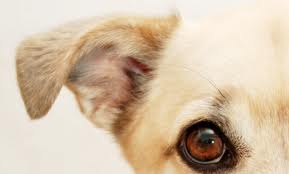Are You Taking Proper Care of Your Pet’s Ears?
 It is not uncommon for us to get a phone call from an owner complaining about her pet shaking its head, scratching at its ears, and having a horrible odor. Chances are the pet could be suffering from otitis externa. This is the medical term for an inflammation of the outer ear canal. It is estimated that up to 20% of the dog population is affected by the disease.
It is not uncommon for us to get a phone call from an owner complaining about her pet shaking its head, scratching at its ears, and having a horrible odor. Chances are the pet could be suffering from otitis externa. This is the medical term for an inflammation of the outer ear canal. It is estimated that up to 20% of the dog population is affected by the disease.
The clinical signs may also include but not limited to: discharge from the ears, redness and swelling of the ear flap or canal, pain around the ears and changes in the pet’s behavior. There are many causes of otitis externa. When we see a pet with ear disease, we think of possibly allergies, parasites, infections, foreign bodies, trauma, hormonal abnormalities, the ear anatomy, hereditary conditions, or tumors.
To diagnose the problem, we must look down in the ear with an otoscope. With this we can assess the condition of the ear canal and determine the amount of inflammation present. Routinely, I will take samples to look at under a microscope. This allows me to examine the ear canal debris for bacteria, yeast, and look at the inflammatory cells that are present. Sometimes a culture/sensitivity test of the discharge is indicated to assist in the identification of the microorganism and identify the antibiotic that would be most effecacious.
The treatment of the otitis is determined by what is causing the ear problem and what secondary conditions are there as a result. So the treatment regimen is not always the same for all pets.
Infections left untreated can spread to the middle and inner ear leading to some more serious consequences. Chronic ear infections usually will not bet better by just cleaning the ears, so it may be necessary to incorporate some antibiotics in the treatment.
Regardless of the cause of the ear disease, it is important to keep the ear canal clean and dry. This can be done by applying some ear cleaner in the ear canal and massaging the base of the ear for about 20 to 30 seconds. The cleaner will soften and loosen the debris so that it can be wiped out with a cotton ball or paper towel. The excess fluid can be removed by letting the pet shake its head.
Once the otitis externa is under control, it is best to keep the ear canals clean and dry. Maybe cleaning then once weekly, especially if the dog swims a lot or has a history of the ear disease.
